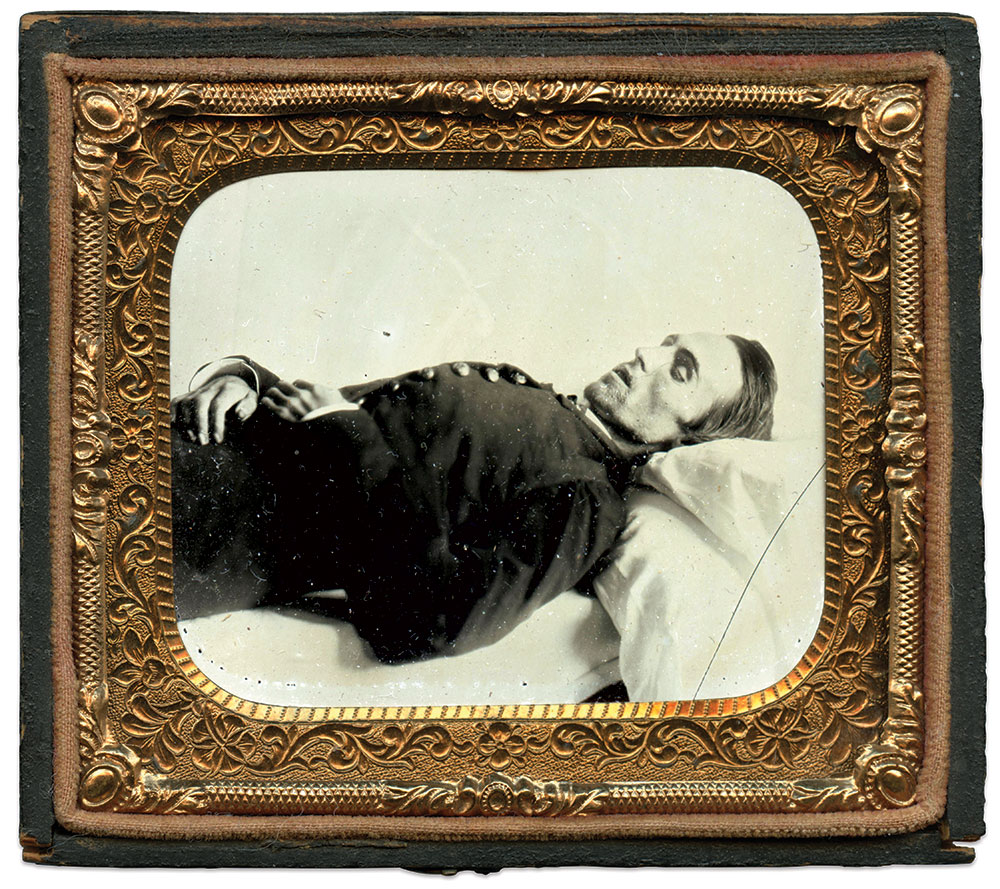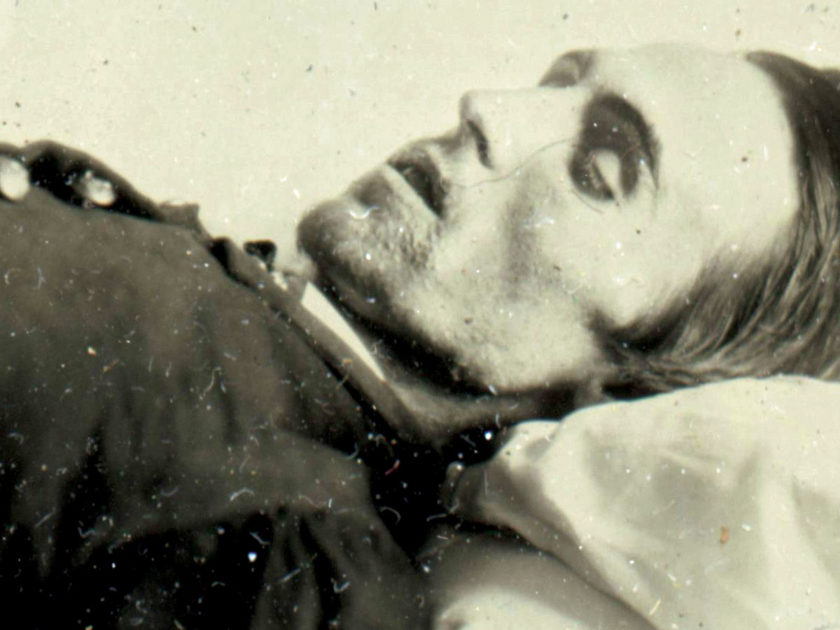The freshly starched cuffs and collar and pressed uniform coat with military buttons underscore the careful preparation of the remains of this Union officer. His shoulder straps have been removed, perhaps as a family keepsake. How he lost his life is not known. His sunken cheeks and bony hands may be the result of disease, or deterioration from exposure during the journey from battlefield or hospital ward to home.

Whoever prepared the body, perhaps a grieving mother, father, sister, brother, or wife, cleaned his face and combed his hair. A brace visible where his neck meets the pillow suggests the photographer assisted in positioning him for this post-mortem portrait.
If family members participated in the preparation, they shared in the solemn Victorian ritual of mourning that brings closure and perhaps some measure of peace. Not all families of deceased soldiers had this opportunity—especially those men lost in battle and never recovered.
Lyrics of the wartime tune “Marching Along” by William B. Bradbury speak to this soldier and others who made the ultimate sacrifice:
We sigh for our country, we mourn for our dead;
For them now our last drop of blood we shed;
Our cause is the right one—our foe’s in the wrong;
Then gladly we’ll sing as we’re marching along.
SPREAD THE WORD: We encourage you to share this story on social media and elsewhere to educate and raise awareness. If you wish to use any image on this page for another purpose, please request permission.
LEARN MORE about Military Images, America’s only magazine dedicated to showcasing, interpreting and preserving Civil War portrait photography.
VISIT OUR STORE to subscribe, renew a subscription, and more.

